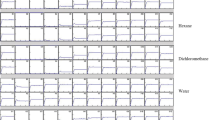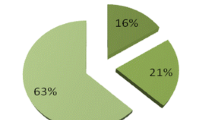Abstract
IN the microthread technique1 the viability of “airborne” microorganisms is studied by assaying their survival when held on ultrafine spider threads freely exposed to the air. The use of this technique as a sensitive detector of air pollution has been described before2.
Similar content being viewed by others
References
May, K. R., and Druett, H. A., J. Gen. Microbiol., 51, 353 (1968).
Druett, H. A., and Packman, L. P., Nature, 218, 699 (1968).
Goldberg, L. J., Watkins, H. M. S., Boerke, E. E., and Chatigny, M. A., Amer. J. Hyg., 68, 85 (1958).
Henderson, D. W., J. Hyg. Camb., 50, 53 (1952).
Arnold, W. A., Intern. J. Air Poll., 2, 167 (1959).
Leighton, P. A., Photochemistry of Air Pollution (Academic Press, New York, 1961).
Haagen-Smit, A. J., Darley, E. F., Zaitlin, M., Hull, H., and Noble, W., Plant Physiol., 27 (1), 18 (1952).
Author information
Authors and Affiliations
Rights and permissions
About this article
Cite this article
DRUETT, H., MAY, K. Unstable Germicidal Pollutant in Rural Air. Nature 220, 395–396 (1968). https://doi.org/10.1038/220395a0
Received:
Revised:
Published:
Issue Date:
DOI: https://doi.org/10.1038/220395a0
- Springer Nature Limited
This article is cited by
-
Viable bacterial aerosol particle size distributions in the midsummer atmosphere at an isolated location in the high desert chaparral
Aerobiologia (1995)
-
The effect of relative humidity and temperature on the survival of bovine rotavirus in aerosol
Archives of Virology (1983)
-
Airborne microorganisms: Their occurrence, distribution and dependence on environmental factors — Especially on organic compounds of air-pollution
Pure and Applied Geophysics PAGEOPH (1978)
-
Oxidation of Atmospheric SO2 by Products of the Ozone–Olefin Reaction
Nature (1971)
-
Toxicity of Open Air to a Variety of Microorganisms
Nature (1969)





